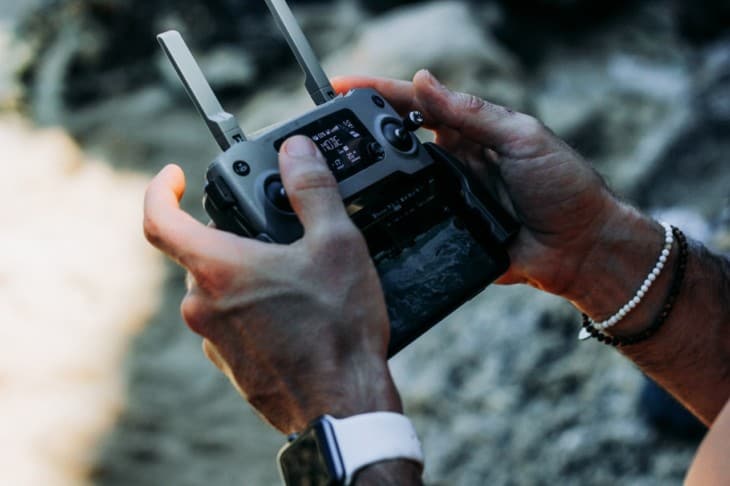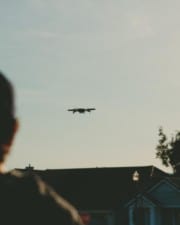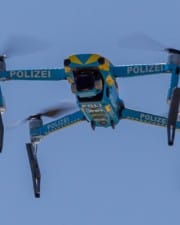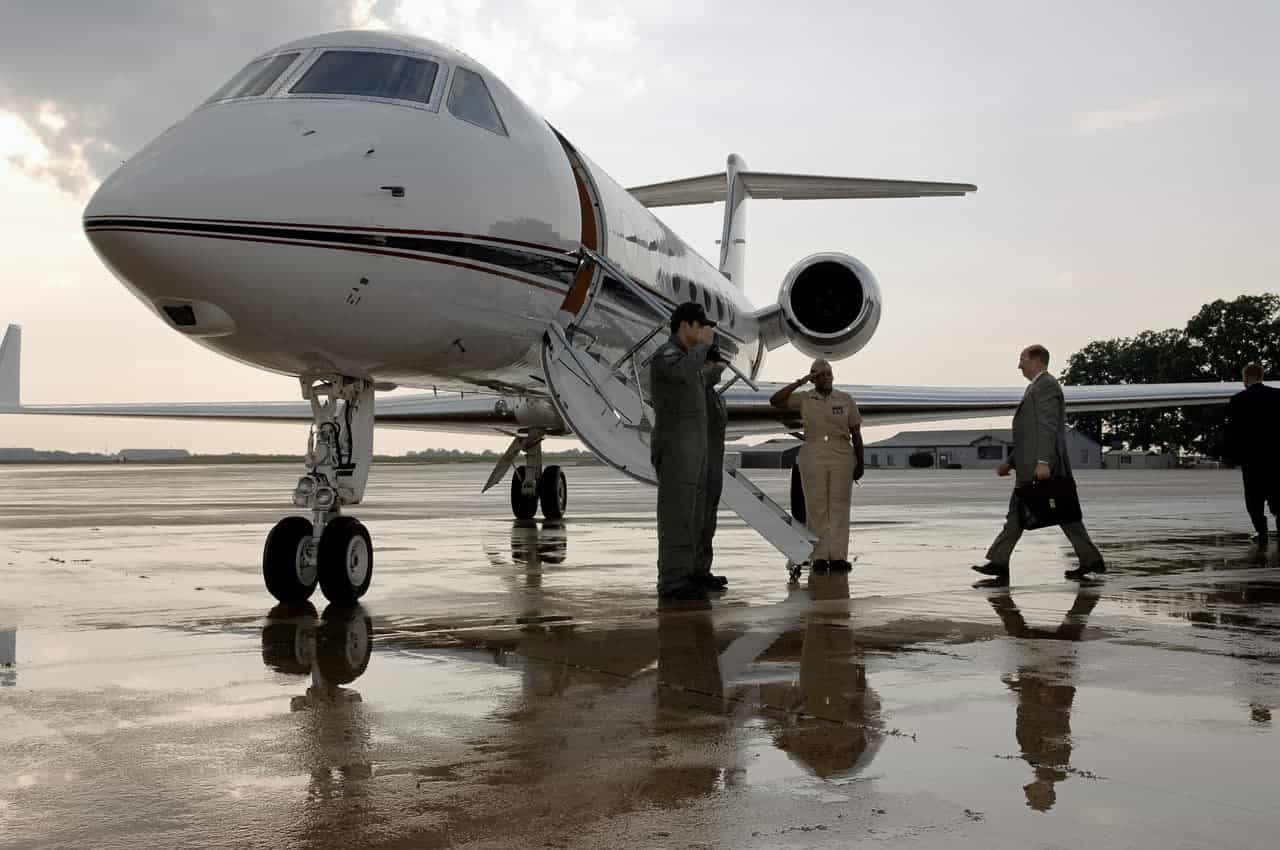As with other devices that rely on electronic communications, drones send and receive transmissions across a specific radio frequency. Depending on where the drone is operated, one frequency range may provide better performance compared to another. So, what frequency do drones use?
TLDR – Drones primarily operate at frequencies between 900 MHz and 5.8 GHz. Most remote-controlled drones use the 900 Mhz frequency while drones with camera transmitters often use the 2.4 GHz frequency. However, some of the latest drones use the 5.8 GHz frequency to avoid interference from wireless transmissions.
Different Types of Electronics and Drone Frequencies
Remote control (RC) drones that do not transmit video back to the ground often use the 900 MHz band, which is a portion of the ultra-high frequency (UHF) radio spectrum. The 900 MHz band was originally used for industrial, scientific, and medical (ISM) devices. The band was also used for amateur radio. However, amateurs must accept interference from ISM devices and cannot create interference.
The Federal Communications Commission (FCC) also designated the 27 MHz and 49 MHz frequencies for consumer items, which include garage door openers, walkie-talkies, and remote control (RC) toys.
Some of the early toy drones used the 27 MHz and 49 MHz bands. However, the smaller frequency bands also increase the risk of interference, which is why two toy RC cars cannot typically operate on 27 MHz or 49 MHz bands at the same time.
Different types of electronics use different radio frequencies to avoid interference with each other. For example, AM radio is broadcast between 535 kHz and 1.7 MHz.
As drones became more sophisticated, it became more common for manufacturers to use the 900 MHz band. The higher frequency allows devices to transfer larger amounts of data. It also provides the ability to penetrate obstructions.
Some of the early drone designs included fixed cameras that stored images or videos on internal storage devices. After retrieving the drone, users could upload the images or videos to a computer or laptop.
With the introduction of video-controlled drones, manufacturers began using higher frequency bands. The 900 MHz band does not offer suitable data transfer rates for transmitting video to the ground.

Video-controlled drones, which are also called first-person-view (FPV) or remote-person-view (RPV) drones, often use the 2.4 GHz or 5.8 GHz frequency bands.
Higher frequencies offer greater data transmission but less range. The limited range of the wavelengths limits the ability of the drone and receiver to communicate through obstructions, such as buildings.
The 2.4 GHz and 5.8 GHz frequency bands are also used by modern wireless communication devices, such as home Wi-Fi networks. When using a drone with the 2.4 GHz or 5.8 GHz frequency band in a residential area, drone pilots are more likely to experience interference.
What Kind of Signal Do Drones Use?
Drones communicate using radio waves on specific radio frequencies, which are called bands. Radio waves are invisible waveforms on the electromagnetic spectrum and are measured in hertz (Hz).
Frequencies used by devices range from 20-kilohertz (kHz) to 300-gigahertz (GHz). Most radio communications involve the use of a transmitter and a receiver.
The transmitter sends data using radio waves on a specific frequency. The receiver is tuned to the same frequency to accept the transmission. When operating a drone, the remote control and the drone may act as both transmitters and receivers.
Transmitters and receivers are also typically equipped with a radio frequency identification (RFID) tag. The RFID provides a unique identifier for pairing the transmitter with the receiver and avoiding interference from other devices.
Many other devices also use RF communication, including remote control (RC) vehicles, garage door openers, medical devices, mobile phones, and Wi-Fi networks. Radio stations and TV stations are also broadcast across specific radio frequencies, which allows consumers to tune into individual stations.
Do Military Drones Use a Different Frequency?
Instead of relying on radio frequencies, military drones typically communicate using satellites. As the military operates satellites across the Earth’s orbit, they can maintain communications with drones in almost any region of the world.
The maximum range of communications with an unmanned autonomous vehicle (UAV) is only limited by the battery life or power source of the drone. By avoiding public radio frequencies, the military can also avoid interference with other devices and a decreased risk of hacking or jamming.
How Far Can a 2.4 GHz Drone Go?
A drone that operates on the 2.4 GHz band typically has a maximum range of about 1 mile (1.6 kilometers) to 4 miles (6.4 kilometers). However, radio frequencies (RF) require a line of sight (LOS).

Without a direct LOS between the transmitter and the receiver, the devices cannot communicate efficiently. When flying in a heavily populated area, buildings, houses, and Wi-Fi devices may interfere with the operation of drones on the 2.4 GHz band. They are more likely to lose data during transmission, which can cause malfunctions during flight.
Many drones come with inexpensive antennas that offer 2 decibels (2dB) of attenuation, which is an amplification of the signal to increase its range. By upgrading to an antenna with more power, drone pilots may be able to increase the range of their devices. Drones with more powerful antennas can maintain transmissions up to four miles away when using the 2.4 GHz or 5.8 GHz bands.
Drones that use the 900 MHz can travel much further. The 900 MHz band allows transmissions up to 20 miles away. The drawback is that the 900 MHz band drones are rarely equipped with live video feeds.
Can You Jam a Drone Signal?
Individuals have developed methods for jamming the radio signals used for operating drones. Jamming is the process of blocking the transmission to disrupt communications between the drone and the pilot.
Jammers are illegal to purchase, requiring individuals to build them using various components. Most jammers consist of a transmitter that is aimed at the drone to disrupt its communication. The transmitter must be tuned to the same frequency as the receiver and typically requires more power than the pilot’s transmitter.
Drones are often designed to automatically react when they lose communication. The drone may automatically land on the spot or attempt to return to its home location using GPS navigation.
Related Posts














